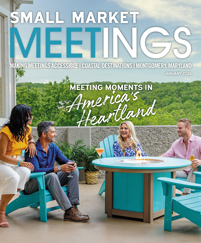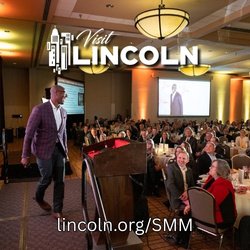Texas residents love their state, and so do visitors. Texas’ Wild West heritage has been romanticized, but it is real.
These towns offer planners plenty of ways to experience the state’s Western history and heritage, from cowboys and cattle ranches to chuck-wagon dinners and campfire stories, railroads and trail rides.
Amarillo
The Spanish word for “yellow” is pronounced “ama-ree-yo,” but when you say “Ama-rill-oh,” everyone knows it’s the Texas city, and “they have an idea that it’s really the authentic Texas,” said Eric Miller, director of communications for the Amarillo Convention and Visitor Council. With 200,000 residents, Amarillo is the Texas panhandle’s largest city, owing much of its growth in the late 1800s to area cattle ranching and the freight railway service.
Just outside of town, Cowgirls and Cowboys in the West offers a variety of tours and experiences, including horseback rides, a chuck-wagon dinner at Los Cedros Ranch, step-on guides and customizable tours that take groups to a Western-wear store, a saddle shop or a working cattle ranch.
Palo Duro Canyon State Park is a 45-minute drive southeast of Amarillo, and it’s the second-largest canyon behind the Grand Canyon. There, groups can hike, mountain bike and ride horses on 30 miles of trails, watch birds, go geocaching and arrange for a ranger-led walk or talk. The Visitor Center sits on the canyon’s rim; groups can travel to the canyon floor by vehicle, where the Trading Post offers a café and gift shop.
“Texas,” an outdoor musical drama, plays at the park’s amphitheater in the summer. Groups can also use the venue for meetings, or reserve the 169-person Mack Dick Group Pavilion or the 54-person Tasajillo Pavilion.
No visit to Amarillo would be complete without a stop at the Big Texan Steak Ranch and Brewery, home to the 72-ounce steak challenge. Next door, the Big Texan’s motel has 54 Western-themed rooms.
McKinney
When the Texas town of McKinney was incorporated in 1913, it also became the official county seat and the de facto hub of agribusiness in the region, especially the cotton industry.
Today, the historic Cotton Mill is an event venue that is chock full of authentic rustic-industrial touches, such as the “big, old scale in the floor where you would bring the wagons up with cotton to be weighed,” said Beth Shumate, communications manager for the McKinney Convention and Visitors Bureau. The brick building has several function spaces, including the event hall and the Dye Room, and can hold up to 600 people for events.
Storybook Ranch is a re-created Old West main street often used as a set for commercials as well as a setting for corporate events. At the ranch, groups can gather in the saloon, the large covered outdoor pavilion or the two-story Opry House that can hold up to 250 people. Guests can also arrange for campfires, hayrides, horse rides or a dinner theater show.
The county-owned Myers Park and Event Center offers nearly 160 acres of countryside and gardens dotted with several event venues. The open-air Pole Barn can seat up to 150, and groups of up to 250 can use the Landing reception hall. The amphitheater, which was built in 2014, can seat up to 300 in its terraced stone seating and up to 750 with added bleachers.












